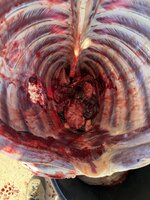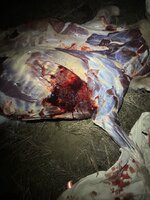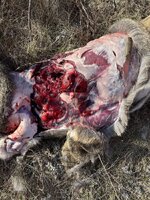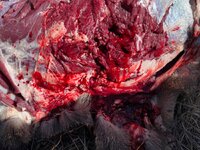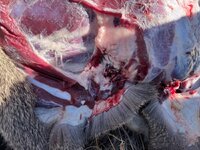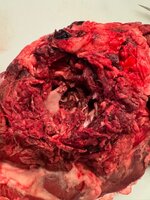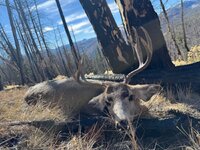I didn't say I needed more. I said my only complaint is the lack of blood trails. Not always an issue, but anyone that has tried to find a deer in thick cover and poor tracking ground in the dark knows how much blood can help. It's not enough to make me change immediately but it's enough to make me notice it.
ELDMs in what I’ve seen in general are quite catastrophic, but lots of times can end up with shallow and round in shape wounds. In saying that I’ve also seen unimpressive narrow wounds with them, but those are far less common.
If you’re after more blood trails, how big around the bullet is doesn’t correlate to exits more often. What correlates to exists more often in general is bullet construction that tends to cause more narrow wounds or what folks call “penciling through”. Also, depending on shot placement, even with a “good exit” blood loss to the ground can be quite minimal in many cases.
This is achievable if desired, just know that it comes with the following caveats which I’m sure you’re probably aware of.
.Longer time to death on average.
.Longer average animal distance travelled after hit.
.No guarantee of “exit” so you’re getting the same undesired result just with a bullet that takes longer to kill.
One thing I’ve done over the last few years, if I have an animal in thick terrain or it’s close to last light and I want the best chance of the animal “not going anywhere” is deviating from my shot placement if the animal gives me the chance.
I’ve found that an aim point of where the scapula meets the thoracic vertebrae is the place to shoot. Think way higher than you’d normally aim, where the shoulder and spine meet.
With “fragmenting” bullets these shots are devastating. With high likelihood of paralysis as well as bullet fragments making their way into vitals. I have had to use follow up kill shots using this shot location, but it’s quite effective for “anchoring” animals as folks say.
